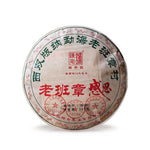Is Earl Grey Tea Good for You
Earl Grey tea offers various health benefits, including promoting antioxidant activity, aiding digestion, supporting heart health, relieving stress, enhancing oral health, and boosting energy and alertness.
Antioxidant Properties
Earl Grey tea contains flavonoids and other antioxidants. These compounds help combat free radicals, reducing oxidative stress and cellular damage. Regular consumption may support your immune system and lower the risk of chronic diseases. The antioxidants in Earl Grey tea can contribute to healthier skin and protect against age-related conditions. Including this tea in your diet can be a simple addition to an antioxidant-rich lifestyle.
Digestive Health
Earl Grey tea may aid in digestion because of its natural compounds. The presence of tannins may help soothe digestive issues and improve gut health. Drinking Earl Grey tea can also alleviate indigestion and symptoms of bloating. This makes it a useful beverage for maintaining digestive wellness. Its calming effect might also aid in easing stomach discomfort.
Bestsellers
Heart Health
Drinking Earl Grey tea regularly can support your heart health. The antioxidants found in this tea may help improve cholesterol levels and blood pressure. Some studies suggest that these benefits can lead to a reduced risk of heart disease. By incorporating Earl Grey into your routine, you might contribute to a healthier cardiovascular system. Moreover, it can be a flavorful alternative to other heart-healthy beverages.
Stress Relief
Earl Grey tea contains bergamot oil, which is known for its calming effects. The aroma and compounds of bergamot can help reduce stress and anxiety. Sipping on a cup of Earl Grey can provide a relaxing break during your day. The act of drinking tea itself can be a soothing ritual. This makes it a great choice for managing daily stress.
Oral Health
Earl Grey tea may also benefit your oral health. The antimicrobial properties of tannins can reduce the growth of bacteria in your mouth. This helps in preventing bad breath and tooth decay. Regular consumption can promote healthier gums and teeth. Including Earl Grey in your routine can be a simple way to complement your oral hygiene practices.
Energy and Alertness
The caffeine content in Earl Grey tea can help boost your energy levels and alertness. It provides a gentler energy lift compared to coffee, which may be preferable for some people. This can enhance your focus and productivity throughout the day. Additionally, the caffeine combined with L-theanine in tea can improve mental clarity. This makes Earl Grey a good option for a mid-day pick-me-up.
Nutritional Components of Earl Grey Tea
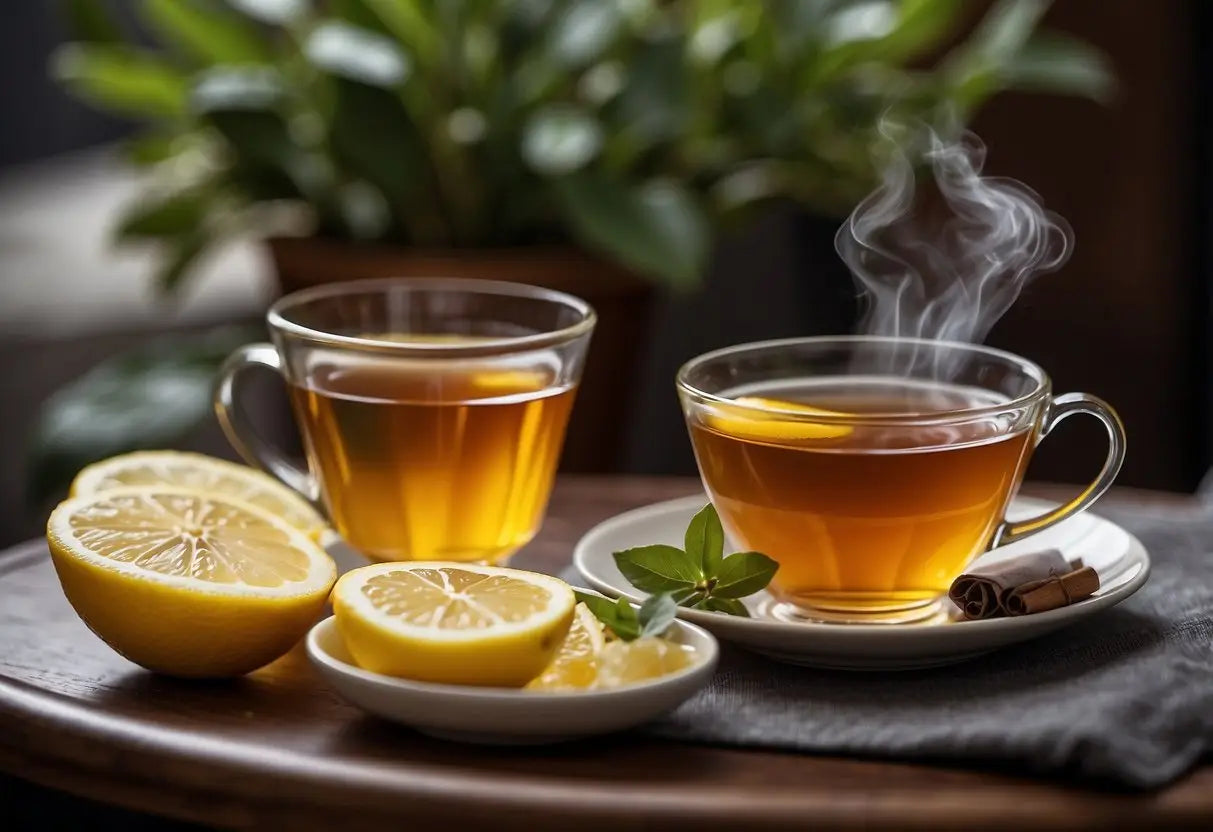
Earl Grey tea contains several beneficial components, including caffeine, flavonoids, and various vitamins and minerals. Each of these contributes to your overall health in different ways, making Earl Grey a valuable addition to your diet.
Caffeine Content
Earl Grey tea contains a moderate amount of caffeine, generally ranging from 40 to 50 milligrams per 8-ounce cup. This amount can provide a mild energy boost without the jitteriness often associated with coffee.
Caffeine in Earl Grey helps enhance mental alertness and cognitive function. It's also beneficial for your metabolism, helping to increase fat burning. For those sensitive to caffeine, consuming Earl Grey in moderation is advisable. Decaffeinated versions are available for those who prefer to avoid caffeine entirely.
Flavonoids
Earl Grey tea is rich in flavonoids, a type of antioxidant found in many teas. These compounds help combat oxidative stress and reduce inflammation in the body. The primary flavonoids in Earl Grey include catechins and theaflavins, which are beneficial for heart health.
Flavonoids also play a role in strengthening your immune system. Including Earl Grey in your diet can contribute to a lower risk of chronic diseases, such as heart disease and stroke. Regular consumption can help improve cholesterol levels and blood pressure.
Vitamins and Minerals
Earl Grey tea contains several essential vitamins and minerals, including vitamins C, E, and K. These vitamins support various bodily functions, such as immune system health and skin protection. Vitamin C, in particular, is known for boosting immunity and improving skin texture.
The minerals found in Earl Grey include potassium, calcium, and magnesium. Potassium helps regulate blood pressure, while calcium and magnesium contribute to bone health. Although the amounts are not large, they add to the nutritional value of your daily tea consumption.
Lao Ban Zhang
Potential Risks and Considerations
While Earl Grey tea offers various health benefits, it is essential to be aware of some potential risks. You may encounter issues related to caffeine sensitivity, teeth staining, and interactions with medications.
Caffeine Sensitivity
Earl Grey tea contains caffeine, which might be problematic if you are sensitive to this stimulant. Excessive caffeine intake can lead to insomnia, increased heart rate, or jitteriness. Typically, a cup of Earl Grey tea has about 40-70 milligrams of caffeine.
For those with heightened caffeine sensitivity, even small amounts could trigger adverse effects. Monitor your intake and consider opting for decaffeinated variants if you experience symptoms like restlessness or headaches.
Teeth Staining
Regular consumption of Earl Grey tea may lead to teeth staining due to its tannin content. Tannins are natural compounds found in tea known to cause discoloration over time. This can be a cosmetic concern for many avid tea drinkers.
To mitigate this, you might want to drink through a straw or rinse your mouth with water afterward. Maintaining good oral hygiene and periodic professional cleanings can also help reduce staining.
Interactions With Medications
Earl Grey tea can interact with certain medications potentially reducing their effectiveness or causing side effects. For instance, the caffeine in the tea could interfere with medications for heart conditions, anxiety, and depression. Additionally, compounds in tea might affect the absorption of iron and other minerals.
Always consult your healthcare provider if you are taking any medications and are a regular tea drinker. This ensures that your tea consumption does not adversely affect your treatment regimen.
Earl Grey Tea Varieties and Quality
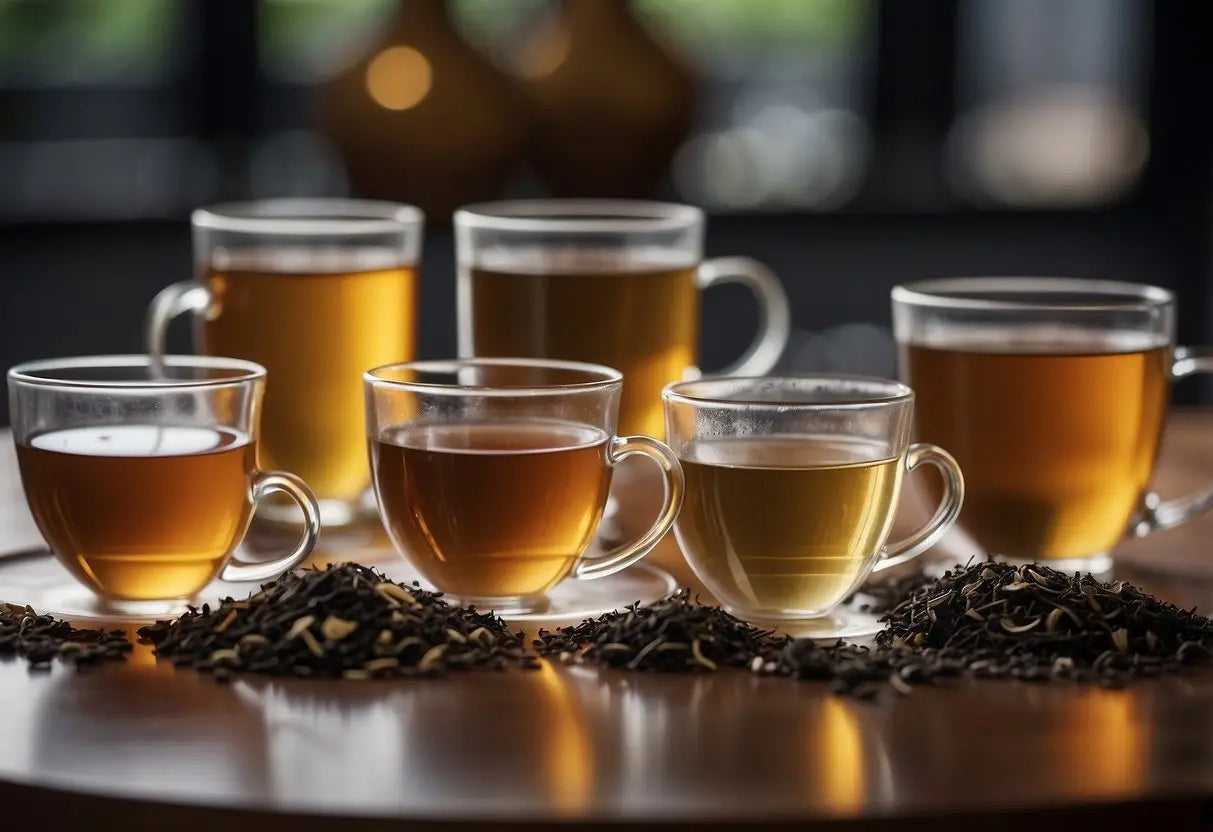
Earl Grey tea comes in different varieties, distinguished primarily by the origin and quality of the bergamot used and whether the tea is loose leaf or bagged. Each aspect can significantly affect your tea-drinking experience.
Bergamot Origin and Quality
The distinct flavor of Earl Grey tea comes from bergamot, a citrus fruit. Bergamot oil from Calabria, Italy, is considered the highest quality due to its rich, aromatic profile. In contrast, bergamot from other regions may offer milder or less complex flavors.
When choosing Earl Grey tea, look for labels specifying the source of the bergamot. High-quality teas often highlight their use of Calabrian bergamot. The origin impacts not just the flavor, but also the overall aroma. Poorer quality bergamot can lead to a less pleasant tea experience.
Loose Leaf vs. Bagged Teas
The form of tea you choose—loose leaf or bagged—affects the final cup significantly. Loose leaf tea generally provides a more robust and nuanced flavor since the leaves are less processed and usually of higher quality. This form also allows for better water flow and expansion of tea leaves, promoting a fuller extraction of flavor.
Bagged tea offers convenience but often contains smaller leaf particles, called fannings or dust, which can result in a quicker, but sometimes harsher brew. Quality brands may still offer good bagged versions, but if flavor is paramount, loose leaf is often the preferred choice for enthusiasts.
Preparation and Brewing Tips
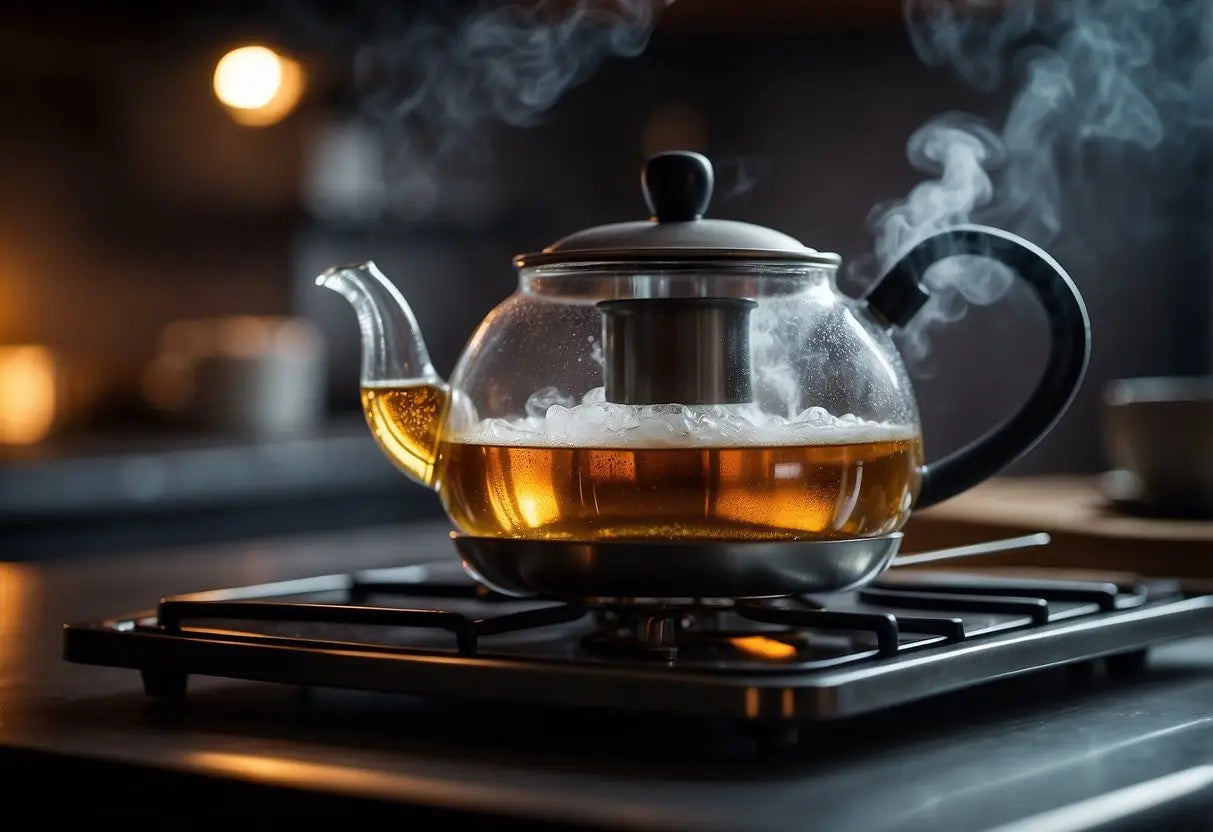
To make the perfect cup of Earl Grey tea, focus on the proper brewing temperature, specific steeping times, and potential additives to enhance flavor.
Brewing Temperature
Maintaining the right water temperature is crucial. Boil water to 200°F (93°C) for black tea varieties. Use a thermometer to check accuracy. Overheating can lead to a bitter taste.
Temperature Guide:
| Tea Type | Temperature (°F) | Temperature (°C) |
|---|---|---|
| Black Tea | 200 | 93 |
Pre-warm your teapot by rinsing with hot water. This ensures the tea stays at the right temperature throughout the brewing process.
Steeping Time
The length of time you steep Earl Grey tea affects its flavor. Generally, steep black tea for 3-5 minutes. Adjust for personal taste:
- Lighter Flavor: 3 minutes
- Stronger Flavor: 5 minutes
Use an infuser to hold the loose tea leaves, allowing them to expand fully. Avoid squeezing the tea bag or infuser, as this can release bitterness into your tea.
Additives and Flavoring
Earl Grey tea is often enjoyed with various additives. Traditional options include a slice of lemon or a splash of milk. For a sweeter taste, add a teaspoon of honey or sugar.
Popular Additives:
- Citrus: Enhances the bergamot flavor
- Milk: Softens the taste
- Sweeteners: Balances the bitterness
Experiment to find your preferred combination, ensuring you do not overpower the tea's natural aroma.
Historical and Cultural Significance of Earl Grey Tea
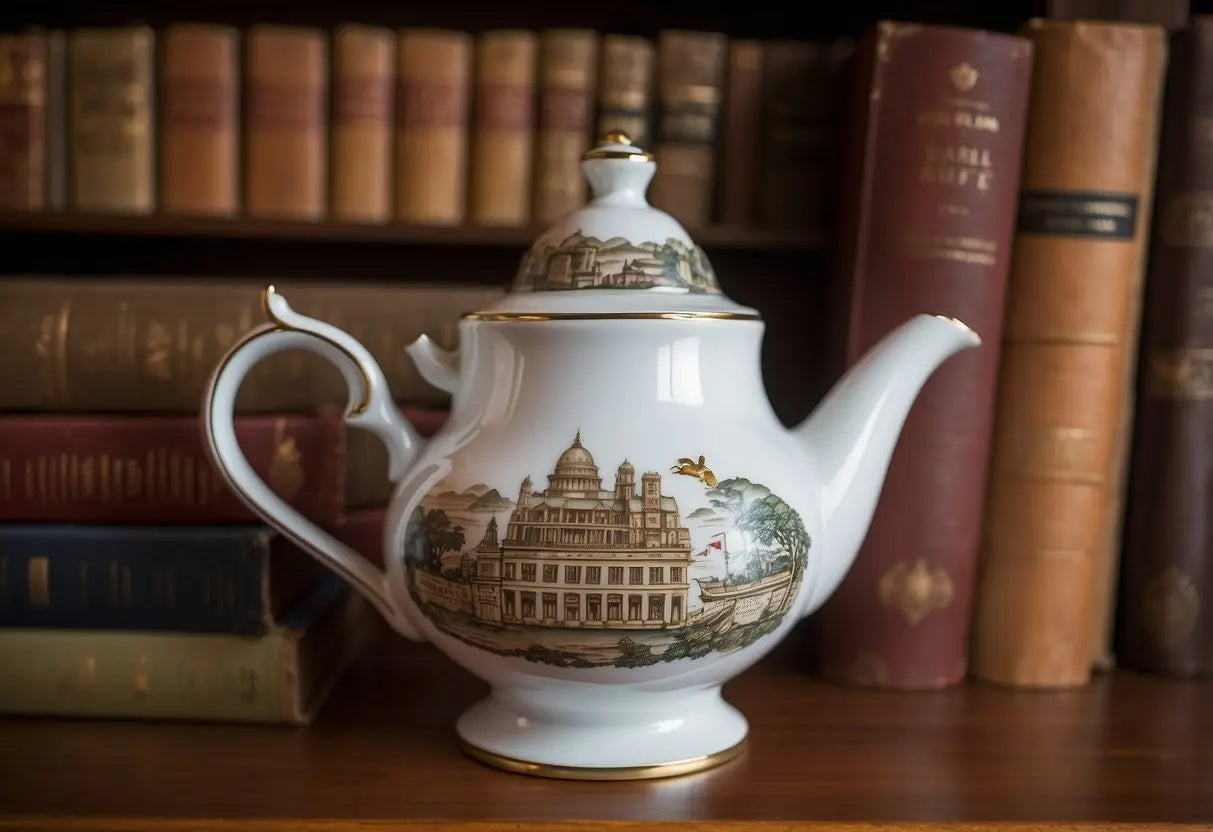
Earl Grey tea has a rich history and deep cultural significance. Named after Charles Grey, the 2nd Earl Grey, it became popular in the 19th century. The tea's distinctive flavor comes from the addition of bergamot oil, a practice believed to have started to enhance the taste of inferior-quality teas.
Key Historical Points:
- Origins: Introduced in the early 1800s.
- Name: Named after British Prime Minister Charles Grey.
- Flavor: Infused with bergamot oil.
Earl Grey tea has been associated with British royalty and high society. It remains a staple in many households and tea rooms across the UK and beyond. Its unique flavor and elegant associations have cemented its place in tea culture worldwide.
Cultural Aspects:
- Affluent Choice: Historically linked to high society.
- Global Appeal: Enjoyed beyond the UK.
- Modern Adaptations: Used in cooking and cocktails.
Earl Grey's appeal has crossed borders, becoming popular in countries like the United States and Japan. Its blend of black tea and bergamot has inspired variations, including green and white Earl Grey teas.
Interesting Facts:
- Literary Mentions: Featured in books and films, symbolizing sophistication.
- Iconic Image: Often associated with British afternoon tea.
- Culinary Uses: Ingredients in desserts and savory dishes.
Comparing Earl Grey to Other Teas

When comparing Earl Grey to other teas, it’s important to consider flavor profiles, health benefits, and caffeine content. Each type of tea offers unique properties worth noting.
Green Tea Versus Earl Grey
- Known for its high antioxidant content, particularly catechins.
- Typically lower in caffeine than Earl Grey.
- Lighter, more vegetal flavor compared to the bold, citrusy notes of Earl Grey.
- Green tea is praised for its potential to boost metabolism, aid in weight loss, and reduce the risk of certain cancers.
- The high antioxidant levels in green tea may also support heart health and improve brain function.
Caffeine Content:
- Green tea usually contains 25-30 mg of caffeine per cup.
Earl Grey:
- Black tea base infused with bergamot oil, offering a distinctive citrus flavor.
- Higher in caffeine compared to green tea.
Health Benefits:
- Earl Grey provides benefits similar to other black teas, such as improved digestion and possible heart health benefits.
- The bergamot oil in Earl Grey may offer additional calming effects.
Caffeine Content:
- Contains about 40-70 mg of caffeine per cup.
Black Tea Versus Earl Grey
Black Tea:
- Full-bodied flavor profile, often stronger than Earl Grey, without the added bergamot oil.
- Similar caffeine levels to Earl Grey, providing a comparable energy boost.
Health Benefits:
- Black tea is rich in antioxidants like thearubigins and theaflavins, which have been linked to better heart health and reduced cholesterol levels.
- Drinking black tea may also improve gut health and reduce blood pressure.
Caffeine Content:
- Generally contains 40-70 mg of caffeine per cup.
Earl Grey:
- Infused with bergamot oil, giving it a unique flavor and potential health benefits not found in regular black tea.
- Provides the same antioxidant benefits as black tea, with the added potential benefits of bergamot.
Flavor Profile:
- The addition of bergamot offers a refreshed twist to the traditional bold black tea taste.
Earl Grey stands out due to its distinctive flavor and unique blend of health benefits derived from the bergamot oil.
← Older post Newer post →











